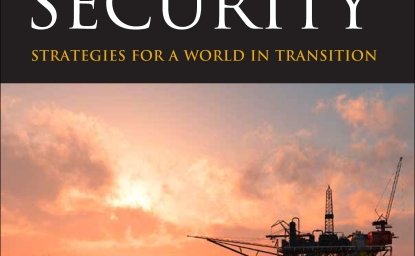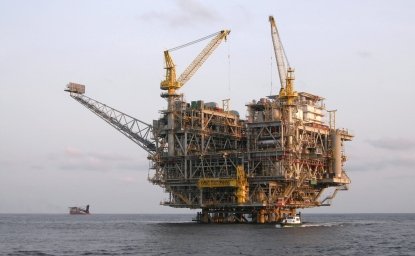Conclusion Update: Energy, Security, and Foreign Policy
The 2013 edition of Energy and Security called for US policymakers to recognize the pivot point we faced in our history by leveraging our domestic energy boom to advance our foreign policy interests abroad – and to accelerate progress on combatting climate change at home and globally. We advocated strategic policies to maximize US energy self-sufficiency through prioritizing deployment of technologies to enhance energy production, while calibrating both economic initiatives and regulations to encourage robust production growth and promote safety and environmental sustainability.
We also called for advancing political initiatives to facilitate energy cooperation across borders, and supporting the deployment of defense capabilities to help ensure the security of energy development and transportation. Such efforts will also better insulate our nation and our allies and partners from the increasing risk of supply shocks from the Middle East and the South China Sea. Furthermore, we emphasized the importance of checking the monopoly power of OPEC and Russia by supporting the transfer of US technology and expertise abroad. This will help create more competitive markets and diversify global oil and gas supplies.
In addition, we advised equally important parallel investments in renewable energy and applicable technologies to ensure the US continues to reduce its hydrocarbons demand and its greenhouse gas (GHG) emissions, while helping other countries enhance energy access, manage demand, and reduce their own emissions. In order for the US to muster its own capacity to pursue these goals and coordinate with allies and partners, we called on policymakers to embrace the concept of a Global Energy Security System (GESS), in effect a holistic strategy for engagement on energy issues with producing and consuming nations.
Energy Security Progress
In the ensuing two years considerable progress has been made on this agenda, with some major issues still to be addressed.
The US has made great strides in laying the foundation for domestic self-sufficiency and vastly more competitive global energy markets. The process for permitting LNG exports has been streamlined; cargoes of US LNG are slated to reach both European and Asian markets. Europe’s capacity to enhance its energy security even as its domestic gas production declines has been enhanced by lower LNG prices and robust competition originating in part from price competition by US shale. When the Dutch courts capped production from the giant Groningen field due to increased seismic risk, Norway and others – not Russia – proved capable of offering alternative supplies at competitive prices.
The ban on exports of US crude oil was lifted in December 2015, as part of a grand bargain in exchange for Congressional support for clean energy tax expenditures and a clear pathway for US support of global climate funding. The US lacks the spare capacity in the ground to be the world’s market balancer akin to Saudi Arabia. Yet repealing the export ban, which we advised in 2013, will enable the US shale industry to use its competitive advantage, once demand recovers, to quickly surge production volumes within a matter of months and be among the first suppliers to respond to increased demand. This will dramatically reduce OPEC’s future power to constrain global supply. The continued growth of US oil and gas supply, despite a decline in oil prices since mid-2014 that has exceeded 70%, has enabled global markets to survive continued disruptions of supply in Libya, Iraq, Yemen and South Sudan, foreign military intervention in Syria, Russia’s military intervention in Ukraine, and high levels of tension between Iran and Saudi Arabia without a market ripple.
We have also made great strides in climate policy at home and abroad. At home the President’s Clean Power Plan is moving forward, and the tax expenditures for solar and wind energy will ensure that the strategy of incentivizing states for early adoption of renewable energy has bright prospects. On the global stage, the bottom up, coalition of the willing strategy (advised by William Ramsay in 2013) helped deliver the Paris Agreement of 2015, with 195 nations making voluntary commitments (known as Intended Nationally Determined Contributions, or INDCs) to reach GHG reduction targets intended to help limit global warming below 2 degrees Celsius. Bilateral agreements between the US and China and, to some extent, the US and India have set the course for clean energy investment in all three nations.
On the technology front, authors Ernest Moniz and Melanie Kenderdine (now Secretary of Energy and Director of the Department of Energy’s (DOE) Office of Energy Policy and Systems Analysis, respectively) have launched the first installment of the Quadrennial Energy Review (QER), which examines how to modernize the US energy infrastructure to promote, as DOE notes, “economic competitiveness, energy security, and environmental responsibility.” On the multilateral front, DOE played a leading role in helping launch the Mission Innovation program (in parallel with the Breakthrough Energy Coalition, a private capital program spearheaded by Bill Gates), a grouping of 20 countries committed to doubling their respective clean energy research and development investment over the next five years to advance the technology roadmaps envisioned in their chapter.
Progress has also been made on safety, with new (widely consulted) rules from the Department of the Interior on blow out preventers and oil spill response. These rules are consistent with William Reilly’s view in 2013 that standard metrics of workplace safety – such as lost workdays and total recordable injuries – are not sufficient measurements of risk in the oil and gas industry and that more attention must be given to process safety.
The US Strategic Petroleum Reserve (SPR) will be funded for its long overdue modernization, but at a pyrrhic cost: Congress passed legislation that could bring the SPR down from 695 million to 531 million barrels by 2025. Such a development would reduce substantially the potency and efficacy of the SPR, which is a key strategic defense against severe price hikes from intentional or unanticipated supply disruptions.
Challenges Ahead
While progress has been made, much of the agenda we envisioned remains to be completed. The challenges of energy poverty and greenhouse gas emissions growth in South Asia and Sub-Saharan Africa are acute, and these countries will require ample international support to ensure that both renewable and conventional energy sources are deployed to enable them to address energy poverty while also meeting the targets their respective INDCs established. It remains uncertain whether the US will address both issues – and the inherent stability and national security risks that will further surface if they are neglected – by retaining the “all of the above” policy required to address them in an adequate manner.
New IEA Executive Director Fatih Birol has planned for strategies to include China, India and other non-IEA consumers in the IEA framework, and to address gas security as well. This is a major gap that needs to be closed, especially as US strategic reserves decline, non-OECD Asia demand increases, and Chinese and Indian reserves grow.
US diplomacy on Europe’s energy security has seen some success, and there are signs that France and Spain will cooperate in helping the EU strategy for creating a truly integrated gas market come to pass. Since our book was published in 2013, Lithuania began operation of its Klaipėda LNG floating storage and regasification unit, began receiving LNG imports, and started piping gas to Estonia, ending the dependence of both countries on a single supplier. Poland has also completed its first LNG terminal and imported its first LNG volumes, and is continuing work on a gas interconnector with Lithuania to supply the Baltic States. Russian efforts to diversify eastward by building two new pipelines to China from Siberia seem to face added obstacles. Yet Moscow’s latest plan to bypass Ukraine – Nord Stream 2 – will be a test of Europe’s commitment to its competition and antitrust policies.
As we write, oil prices are at their lowest since the 2008 financial crisis. Yet US policymakers would err if they were complacent about the oil boom we are sowing today. As investment falls off for high cost oil (deep water, heavy oil and Arctic) a gap will grow between supply and demand by 2019, and the power of low cost OPEC producers will be more salient. The risk of instability in Saudi Arabia remains a non-negligible tail risk, and ISIS threats to Iraq must be considered as well. Iran will be returning to the oil market in 2016, although recent comments out of Tehran indicate they will do so more gradually than previously anticipated. But Iran’s return to the international community now appears to be engendering deeper rifts and conflicts with their Sunni competitors, with potentially severe risks to energy supply and therefore the global economy.
This leads us to one additional remaining agenda item – the need for the US government to take a holistic approach to energy and environmental policy by coordinating domestic and international stovepipes at the White House. While this is an item for the next administration, the intersection of energy and national security remains essential. Our current governmental infrastructure continues to provide for the administration of such matters through a domestic political lens that does not fully reflect the global implications of policy outcomes.
The next Administration will need a strong and holistic White House focus on energy and environment to address rising instability in the Middle East, an aggrandizing Russia, cyber threats to power grids and the next energy price spike (probably in 2017-18) as well as to help guide clean energy transitions at home and abroad.
Jan Kalicki is global fellow at the Woodrow Wilson Center, senior fellow at Brown University's Watson Institute for International and Public Affairs, and chairman of Eurasia Foundation. He served previously as counselor for international strategy at Chevron, and before that as Counselor to the U.S. Department of Commerce and White House NIS Ombudsman in the Clinton Administration.
David Goldwyn is President of Goldwyn Global Strategies, LLC. He is the chairman of the Atlantic Council’s Energy Advisory Group, and a member of the National Petroleum Council. He has served as Secretary of State Clinton’s special envoy and coordinator for international energy affairs, national security deputy to the U.S. ambassador to the United Nations, and chief of staff to the under secretary of state for political affairs.
__________
Thanks to Cory Gill for his assistance in the preparation of this chapter update.
Authors

Former Counselor for International Strategy, Chevron; Chairman, Eurasia Foundation

Explore More
Browse Insights & Analysis
Energy and Security: Strategies for a World in Transition

La esencia de la infraestructura global: perspectivas del líder de la industria Matt Harris

